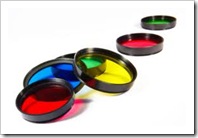 Today’s Photo Tip: My renewed interest in producing Black & White images led me to scour the Internet for info pertaining to making the best captures for later conversion. This led to the study of photography filters. Though I already own three filters, a UV, Circular Polarizing Filter and a Neutral Density filter, I learned of many more and how they could help to improve my images. After combining and reducing my notes on this subject, I created the following photo tip … A Primer on Understanding Photographic Filters. Today’s Photo Tip: My renewed interest in producing Black & White images led me to scour the Internet for info pertaining to making the best captures for later conversion. This led to the study of photography filters. Though I already own three filters, a UV, Circular Polarizing Filter and a Neutral Density filter, I learned of many more and how they could help to improve my images. After combining and reducing my notes on this subject, I created the following photo tip … A Primer on Understanding Photographic Filters. |
Tuesday
Journal Entry for Tuesday, February 26th
Monday
Journal Entry for Monday, February 25th
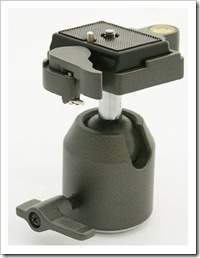 Today’s Photo Tip: This tip, titled “Avoiding Camera Shake”, points out some steps for taking handheld photos as well as for using a monopod and a tripod. Sometime these things sound really simple, however, failure to incorporate them into a regular routine can be cause for less than satisfactory picture results. After combining information found on three different sites, I created the following photo tip … Avoiding Camera Shake. Today’s Photo Tip: This tip, titled “Avoiding Camera Shake”, points out some steps for taking handheld photos as well as for using a monopod and a tripod. Sometime these things sound really simple, however, failure to incorporate them into a regular routine can be cause for less than satisfactory picture results. After combining information found on three different sites, I created the following photo tip … Avoiding Camera Shake. |
Saturday
Journal Entry for Saturday, February 23rd
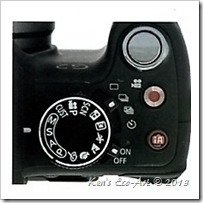 Today’s Photo Tip: The last couple of days I spent some time reading the manual on my camera (The Paanasonic Lumix DMC-G2 – The Unofficial Quintessential Guide) in and effort to better familiarize myself with the camera's various shooting modes. This led to a little Internet research on camera mode dials and modes. I combined my notes on these two efforts into the following photo tip … Understanding Camera Modes. Today’s Photo Tip: The last couple of days I spent some time reading the manual on my camera (The Paanasonic Lumix DMC-G2 – The Unofficial Quintessential Guide) in and effort to better familiarize myself with the camera's various shooting modes. This led to a little Internet research on camera mode dials and modes. I combined my notes on these two efforts into the following photo tip … Understanding Camera Modes. |
Tuesday
Journal Entry for Tuesday, February 19th
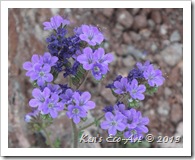 Today's Photo Tips: With spring fast approaching, I began looking into tips on taking pictures of wildflowers. After reading several articles on the subject, I compiled a list of notes that I was finally able to put together as a list of tips that I used to create the following photo post … Taking Pictures of Wildflowers. Today's Photo Tips: With spring fast approaching, I began looking into tips on taking pictures of wildflowers. After reading several articles on the subject, I compiled a list of notes that I was finally able to put together as a list of tips that I used to create the following photo post … Taking Pictures of Wildflowers. |
Sunday
My Latest Musing
 In keeping with my new year’s resolution to take more Black & White pictures, I’ve been review some of last years picture to see if they lend themselves to this conversion process. Click on the link below to check out my latest musing on a Black & White conversion of a picture that I recently added to my Photo Gallery Blog. Musings - Black & White Conversions In keeping with my new year’s resolution to take more Black & White pictures, I’ve been review some of last years picture to see if they lend themselves to this conversion process. Click on the link below to check out my latest musing on a Black & White conversion of a picture that I recently added to my Photo Gallery Blog. Musings - Black & White Conversions |
Friday
Avoiding Camera Shake
A Primer on Understanding Photographic Filters
Understanding Camera Modes – Key to Controlling Exposure
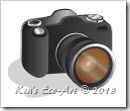 Today's Photo Tip: It’s not surprising that most camera owners use the Automatic (iA) mode. Auto mode tells your camera to use it’s best judgment to select shutter speed, aperture, ISO, white balance, focus and flash to take the best shot that it can. On newer cameras, these automatic modes can even analyze the type of scene and lighting conditions, allowing the camera to then selects one of its scene modes (more on these different modes later) that has the best exposure setting for that type of picture. Using this mode will give you nice results in many shooting conditions, making it easy to get into the habit of using. However, you need to keep in mind that you’re not telling your camera any extra information about the type of shot you’re taking so it will still be ‘guessing’ as to what you want. As a result some of the following modes might be more appropriate to select as they give you more control over the shot. Today's Photo Tip: It’s not surprising that most camera owners use the Automatic (iA) mode. Auto mode tells your camera to use it’s best judgment to select shutter speed, aperture, ISO, white balance, focus and flash to take the best shot that it can. On newer cameras, these automatic modes can even analyze the type of scene and lighting conditions, allowing the camera to then selects one of its scene modes (more on these different modes later) that has the best exposure setting for that type of picture. Using this mode will give you nice results in many shooting conditions, making it easy to get into the habit of using. However, you need to keep in mind that you’re not telling your camera any extra information about the type of shot you’re taking so it will still be ‘guessing’ as to what you want. As a result some of the following modes might be more appropriate to select as they give you more control over the shot. 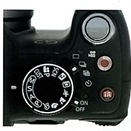 A good understanding and proper use of digital camera modes can be essential in accurately controlling the exposure in photography. The camera mode dial is typically a large round rotatable dial that has the modes listed as Program (P), Shutter Speed (S), Aperture (A), and Manual (M). Combined with ISO, these modes let you manually control some or all parameters of the exposure. Let's take a look at each of these modes. A good understanding and proper use of digital camera modes can be essential in accurately controlling the exposure in photography. The camera mode dial is typically a large round rotatable dial that has the modes listed as Program (P), Shutter Speed (S), Aperture (A), and Manual (M). Combined with ISO, these modes let you manually control some or all parameters of the exposure. Let's take a look at each of these modes.(P), Program mode, automatically chooses the Aperture and the Shutter Speed for you, based on the amount of light that passes through the lens. Depending upon the intensity of light, the camera will try to balance between aperture and shutter speed. In this mode, some cameras allow you to override the "camera-guessed shutter speed and aperture" by manually making adjustments to one or the other. Program mode is similar to Auto but gives you a little more control over some other features including flash, white balance, ISO etc. Check your digital camera’s manual for how the Program mode differs from Automatic in your particular model. This mode is best used for "quick point & shoot" situations. (S), Shutter Priority mode, lets you manually set the camera’s shutter speed while the camera automatically increases and decreases the aperture based on the amount of light that passes through the lens. This mode is intended to be used when motion needs to be either frozen or intentionally blurred. The danger in using this mode is the limitation (min/max f/stop) of your lens, which can result in either an underexposed or overexposed image. (A), Aperture Priority mode, lets you manually set the lens aperture, while the camera automatically picks the right shutter speed to properly expose the image. It gives you full control over subject isolation and allows you to have full control over depth of field, because you can increase or decrease the lens aperture and let the camera do the math on measuring the right shutter speed. There is very little risk of having an overexposed or underexposed image because the shutter speed (depending upon the camera) can go as low as 30 seconds and as fast as 1/8000th of a second, which is more than sufficient for most lighting situations. This should be your most used mode. (M), Manual mode, lets you have full control over your camera. You need to think about all settings including shutter speed, aperture, ISO, white balance, flash etc. Because you can manually set both the aperture and the shutter speed to any value you want, as well as other exposure controls, it gives you the flexibility to set your shots up as you wish. Of course you also need to have some idea of what you’re doing in manual mode. This mode is generally used in extreme lighting situations where the camera has a hard time figuring out the correct exposure and incorrectly guesses the exposure by either overexposing or underexposing the rest of the image. Manual mode is also useful for consistency by insuring that both shutter speed and aperture stay the same across multiple exposures when taking panoramas requiring stitching - otherwise, some images will be darker, while others are lighter. (ISO) What about ISO? Most digital cameras do not automatically change ISO in the above camera modes, so you have to set it manually. However, many cameras have an "Auto ISO" setting that, when enabled, will allow the camera to adjust ISO as needed. If you do not have an “Auto ISO” feature, then set your ISO to the lowest ISO number (usually ISO 100) and increase it as needed in low-light situations. Other Modes: Most of today's camera offer dozens of additional pre-defined modes, with some of the more common (Portrait Mode, Scenery Mode, Sports Mode, Close-up Mode, Movie Mode,etc.) directly on the mode dial and often many more grouped under something like Scene (SCN) mode. Each of these modes generates specific camera settings that have been determined to work best in the selected scene. Even though these give your camera a few more scene taking hints (without you needing to do anything more), try not to rely on these settings too much. First of all, these camera-specific settings vary by camera. Second, they simply use a combination of the above modes with the help of some camera-specific settings that still will not work in every situation. In Summary: Each of these modes has its own purpose and value, and should be used accordingly. However, as noted previously, the mode that will provide you with the most consistent exposure results is the (A) Aperture Priority mode. When shooting panoramic pictures that will require stitching, use the (M) Manual mode. | ||||||
Subscribe to:
Posts (Atom)

